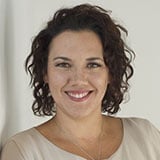An equal opportunity to save lives
If the mining sector’s focus on diversity has done anything, it’s proven that gender should never determine who gets what job or pursues what kind of career. I’ve spent 15 years in disaster management and quality control. I’ve been a mine rescue member and for the last five years, a mine instructor. I’m only too aware of how dangerous mining work can be. And while we all hope it never happens, if and when trouble does strike, we need cool, competent, and caring people to respond. Race, ethnicity, religion, sexual orientation, and gender have no relevance.
Having teams trained in mine rescue is a matter of legislation in most countries. In most operations in Canada, being part of a mine rescue team is voluntary. But those who want to participate must still apply and qualify. There are standards of fitness that must be met, and that includes being able to manage well in stressful situations. Whatever the emergency, we can never put more lives at risk by having rescue teams that may not be capable of peak performance when we need them most. The teams I work with respond to ground falls, injuries, and illnesses as well as more extensive issues and situations. Without trained and competent individuals who know exactly what to do and how to do it, safe responses cannot be guaranteed.
Our team members come from all walks of life. Mine rescue teams typically have six or seven people, including a director of operations, captain, a vice-captain, and at least three rescuers. The director of operations is the communication link between the captain and the management team and relays the objectives of each mission to the team. The captain maintains discipline and the vice-captain guards the rear, ensuring the team’s safety and standing ready to take control if the captain should be unable to continue for any reason.
Each of the three rescuers has an assigned duty. The utility rescuer determines how to carry out the procedure. Another is responsible for gas and vent, taking accurate readings of the air quality that are critical to the safety of the operation. The third rescuer is the first-aid responder. There’s always at least one “extra” who must be able to substitute where needed. At all times, four rules are paramount: Keep the team safe. Ensure the safety of the personnel at the site. Address the problem. And rehabilitate the facility.
Competitions such as the upcoming International Mines Rescue Competition in Ekaterinburg, Russia, are an important part of keeping our preparedness training current and our reflexes sharp. This September, Diamonds in the Rough will be the first all-woman team to participate on this international platform, so we’re more motivated than ever to take part in the intense skills brush-up that training for these competitions demands. It helps boost our confidence and improve our skills. Taking part in the contest itself lets us see how other teams from other countries approach mine rescue. We learn new ways to respond, and get more practice working as a team. The training is what’s important. The competition is a game.
With strong role models, leadership, and the encouragement that this kind of visibility is providing, we’re setting an even bigger goal for the competition in Russia. We want to highlight the contributions and benefits that women bring to the industry. We’re raised to be nurturing, to be caregivers, and that requires a different kind of thought process. We tend to be more conservative when it comes to risk management and the safety of others. And our ability to think divergently and outside the box helps us adapt processes and equipment as the situation mandates.
Our women’s rescue team has taken over 10 years to build. In the international competition in Sudbury in 2016, just five of 190 participants were women. Diamonds in the Rough will essentially double that number at this year's competition. At the Western Regional competition last year, a woman was on a team that placed first overall. In Russia, we will have an international platform and another opportunity to display what women are capable of. We’re coming to play, and we’re ready to win. Game on!
